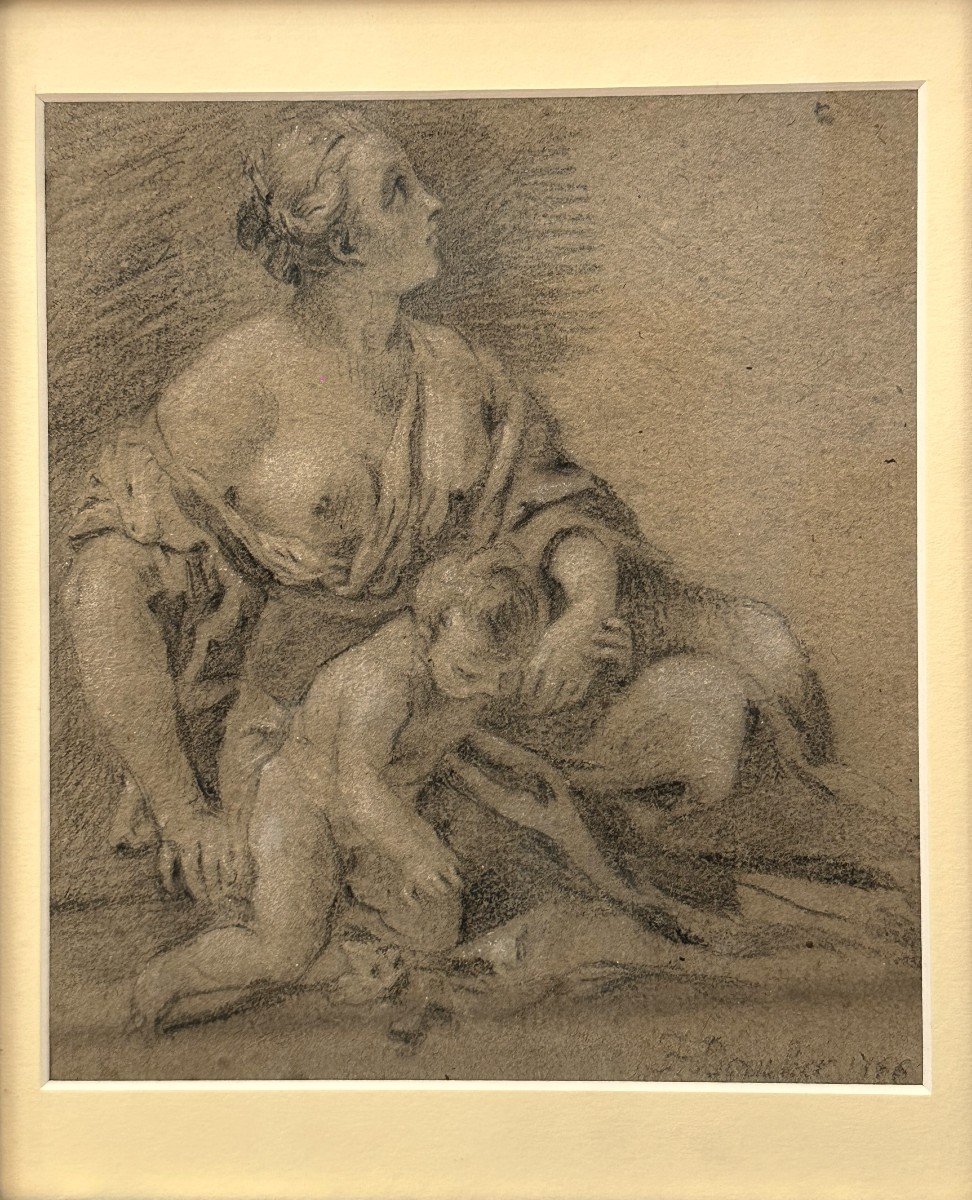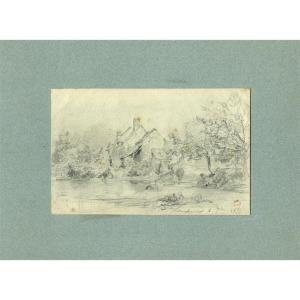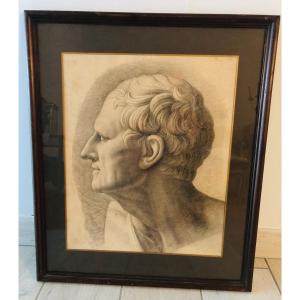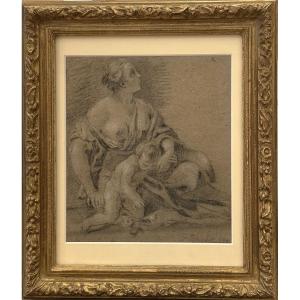François Boucher's style was characterised by pastel colours and an omnipresent sensuality, whether in mythological, erotic or more classical themes. As well as painting, he excelled in the decorative arts, greatly influencing the aesthetics of his time. Although criticised at the end of his career for his frivolity by neoclassical artists such as Jacques-Louis David, François Boucher was rehabilitated in the 19th century. Today, his legacy lives on, embodying the spirit of the Rococo period and its ideal of refinement.
This drawing, done in charcoal and white chalk on paper and dated 1766, is a perfect illustration of the artist's characteristic Rococo style. The scene depicts a mother and child in a tender moment of complicity. The mother, her bosom bare, wears a gentle, contemplative expression, her questioning gaze drawn to something outside. Meanwhile, the child is distracted, trying to pick something up from the ground.
The child is depicted with remarkable meticulousness, highlighting anatomical details, while the woman's clothes, rendered with flowing folds, testify to Boucher's mastery of the art of drapery. This spare drawing is a perfect illustration of the artist's talent and ability to capture the authenticity of a tender moment of intimacy between mother and child.





















 Le Magazine de PROANTIC
Le Magazine de PROANTIC TRÉSORS Magazine
TRÉSORS Magazine Rivista Artiquariato
Rivista Artiquariato
